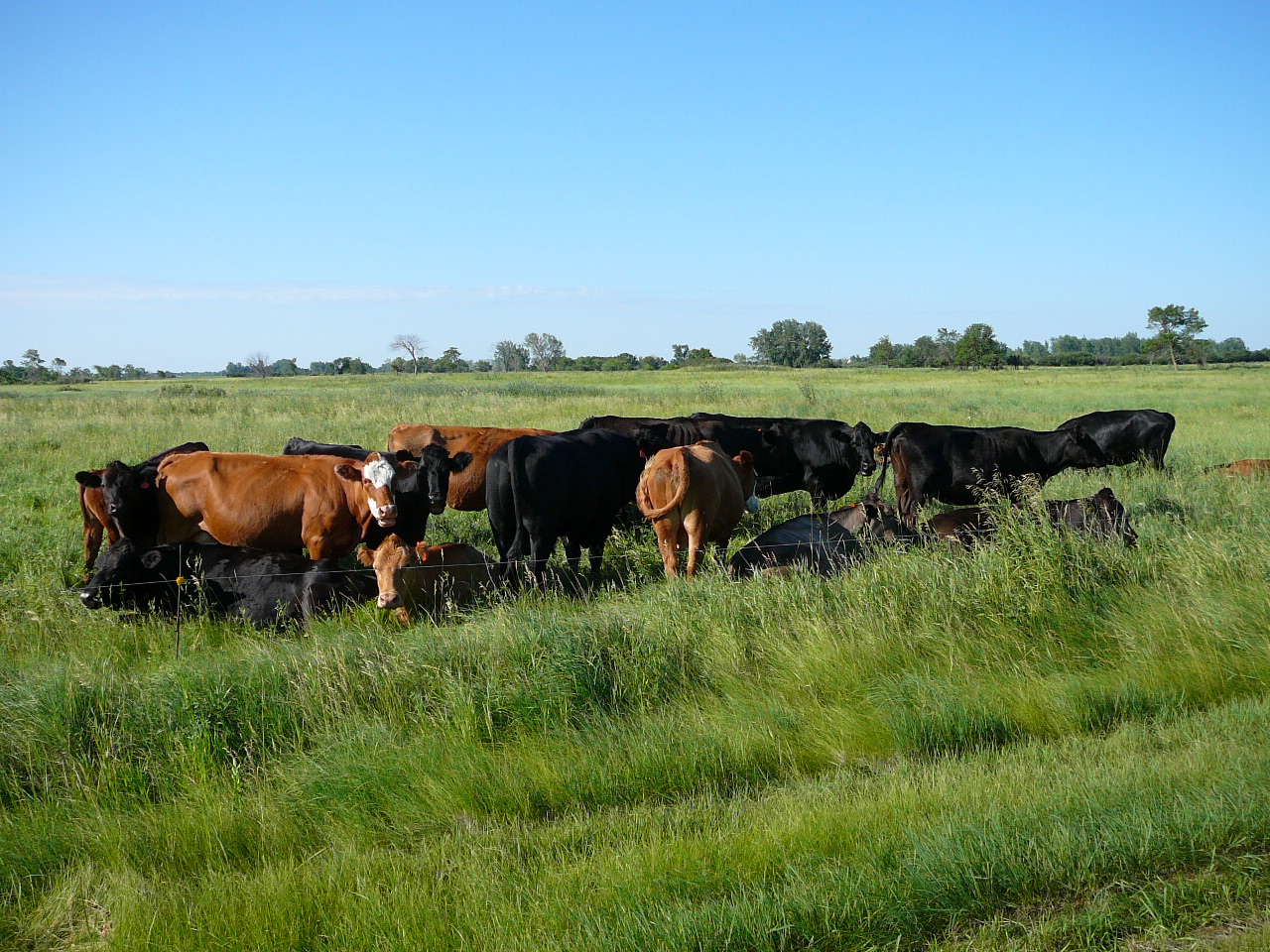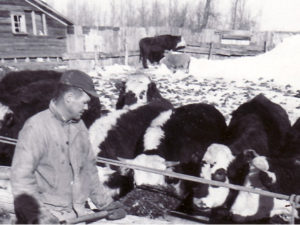DISCLOSURE: I am a member of the Beef Checkoff Beef Expert Bureau for which I receive an annual honorarium.
I grew up on a family farm in North Dakota with a large cow-calf operation. Most of the food we ate on the farm came from what we grew, including beef. To feed his family of seven, my dad would typically butcher two steers each year, one in the spring and one in the fall.
Selecting which steer to butcher was easy for my dad. He’d pick the “naughtiest” one, the steer that was most difficult to herd when moving the cattle from the winter feedlot to summer pastures or vice versa. These fence-busting, impossible-to-herd castrated boys’ destiny was dinner.
The beef from the spring steers was always richer in flavor because the beef contained more fat. The cattle had been eating silage (fermented stalks and cobs of field corn) and hay bales all winter. The winter weather conditions in North Dakota are too harsh to let cattle fend for themselves. They spent the winter months in a fenced feedlot (as seen in the photo below, taken in 1959 – the feedlot and barn in the 1980s was much larger!) with a barn for protection from snow and painfully cold winds. Meanwhile, in the summer, the cattle can graze on native prairie grassland.
The beef from the fall steers was always much leaner with a more “beefy” flavor after the cattle had spent the summer grazing on the diverse prairie grasses. There were distinct differences I noticed when browning ground beef.
Beef from a steer butchered in the spring yielded pale yellow fat while the ground beef from a steer butchered in the fall yielded almost no fat. If it did, the fat was nearly clear in color. I’m guessing here, but I’ll bet the spring steers yielded beef that was 20% fat while the fall steers yielded beef that was very lean, likely less than 10% fat by weight.
These memories from the 1980s tell part of the story of the nutrient qualities of beef. What cattle eat has an influence on the nutrition profile of the meat, but how cattle are bred and fed today compared to 30 years ago tells a bigger story.
Breeding and feeding of cattle as well as butchery have all had a major impact on the fat content of beef. Cattle have been bred to be leaner, the diets of cattle have been customized to create flavorful, high quality, leaner meat, and butchers have become accustomed to trimming off nearly all the visible external fat.
Today most of the beef in the meat case at your local grocery store is lean beef. What is lean beef? According to USDA standards, beef is lean if it contains less than 10 grams of total fat, 4.5 grams or less saturated fat, and less than 95 milligrams of cholesterol per 3-ounce cooked serving.
When I was growing up on the farm we ate beef twice a day nearly every day. The beef portions were 3-4 ounces at most. We filled half our plates with vegetables from my mom’s garden, and dessert was typically fruit. The bread we ate was whole wheat, made with wheat from my dad’s fields. Milk was the beverage of choice at every meal.
These balanced, nutrient-rich meals were delicious and satisfying. They fit with the Mediterranean saying, “What grows together goes together.” They aligned with today’s dietary guidance. And they exemplified the notion that there isn’t one perfect diet; there are many ways to put together a dietary pattern that is flexible, and satisfying while also promoting good health. I hope your healthful, satisfying dietary pattern includes lean beef!


